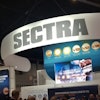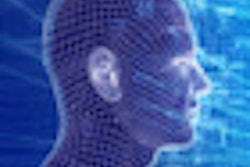
Our monthly informatics column focuses on why radiologists must insist IT solutions support best clinical practices and the interests of patients.
It is well known to those of us who work in healthcare that coming to a correct medical diagnosis may take a long time. Making a diagnosis in medicine often follows a lengthy process of clinical history, blood tests, radiology exams, biopsy, histology, surgery, etc. When someone goes through medical notes, the initial provisional diagnosis by the admitting doctor may be completely different than the final diagnosis made.
 Dr. Neelam Dugar is a consultant radiologist at Doncaster Royal Infirmary, U.K., and chair of the Royal College of Radiologists' Imaging Informatics Group.
Dr. Neelam Dugar is a consultant radiologist at Doncaster Royal Infirmary, U.K., and chair of the Royal College of Radiologists' Imaging Informatics Group.
Medical records are therefore a dynamic process. Entries are made in medical records by multiple doctors who are part of the team responsible for the patient. Each entry in the medical record expresses opinions based on the information available at a particular time, such as symptoms, clinical signs, and investigations. They also record management decisions taken at that time.
Radiology reports are a type of medical record. Radiology reports are opinions by radiologists expressed based on the findings of medical images, clinical history provided on the request card, and previous imaging review. Radiologists also provide recommendations about further management of the patient when appropriate, including further investigations or referral to another specialty.
Radiology reports are also a dynamic process similar to clinical opinions noted in medical records. Often in light of more details -- clinical information, biopsy results, further radiology tests -- radiology opinions can change and/or become more accurate. We realize the dynamics of radiology reports from participating in cancer multidisciplinary meetings (MDMs). Access to pathology opinion can often change our opinion on whether we consider a lymph node to be benign or malignant.
Recording of multiple medical opinions for a single admission on the patient's medical notes is the norm, but recording of multiple opinions for a single radiology exam is uncommon. This may be related to cultural barriers; radiologists do not want to document that they disagree with their colleagues. Another limiting factor may be technological failure. It is easy to record multiple opinions on paper medical notes, but many RIS have a limited ability to allow for recording of multiple opinions when it comes to radiology reports.

Every time a patient is reviewed on the ward, the reviewing doctor will document an entry in the medical records, even if it is to say: "Patient reviewed by Dr. ----, no change to the management plan." The same is not true when a radiologist reviews images at the cancer MDM or at the request of a clinical doctor. This may be either due to cultural barriers or technological failure. Failure to document second opinions can result in the most up-to-date radiological opinion not being available to the team looking after the patient.
It is important that radiologists insist IT solutions support best clinical practices and the interests of patients. Technical setup in the rooms used for MDMs must have appropriate technical support to enable radiologists to record second opinions efficiently. Radiologists must insist on a full reporting workstation with a three-monitor setup at the MDM rooms. RIS monitors will display a worklist of patients to be discussed at the MDM. When a particular exam is open on RIS, radiologists should be able to type/dictate a record, which may simply state: "reviewed at MDM" or "pathology and tumor markers confirm the diagnosis as ... " with a date and time stamped on it. The middle monitor should display the PACS images being discussed at the MDM, and the right monitor must show previous relevant prior images.
Radiologists must also clearly specify when replacing or procuring RIS that these IT systems support clinical workflows for documenting multiple opinions/supplementary reports to support patient care. It should be possible to create a worklist for patients for discussion at the MDM by "tagging" exams. The RIS should allow for supplementary or additional reports to be documented via dictation, typing, or voice recognition. The workflow to support this must be slick and efficient on RIS. The name of the radiologist/reporter should be documented with a date/time stamp. The original report must always remain visible at the bottom of the supplementary report.
Referring doctors should also be able to request second opinions electronically. Currently, most "order comms" (order communication systems for electronic requesting of radiology exams) only support a primary request electronically. There is a lack of an electronic process for requesting second opinions. Again, this shows a failure of IT systems. It is important that when radiologists are specifying order comms and RIS that they specify this very clearly. Order comms must be able to make requests for second opinions from a particular radiologist, if required. The RIS must be able to accept requests for second opinions from order comms and support an efficient workflow for radiologists to provide second opinions.
Documenting second and subsequent opinions on radiology reports is hugely important for improving patient care. Radiology reporting must be considered similar to other forms of medical documentation. Removing cultural and technological barriers are hugely important.
Further Reading
Royal College of Radiologists' "Standards for the recording of second opinions or reviews in radiology departments"
Dr. Neelam Dugar is consultant radiologist at Doncaster Royal Infirmary, U.K., and chair of the Royal College of Radiologists' Imaging Informatics Group.
The comments and observations expressed herein do not necessarily reflect the opinions of AuntMinnieEurope.com, nor should they be construed as an endorsement or admonishment of any particular vendor, analyst, industry consultant, or consulting group.



















